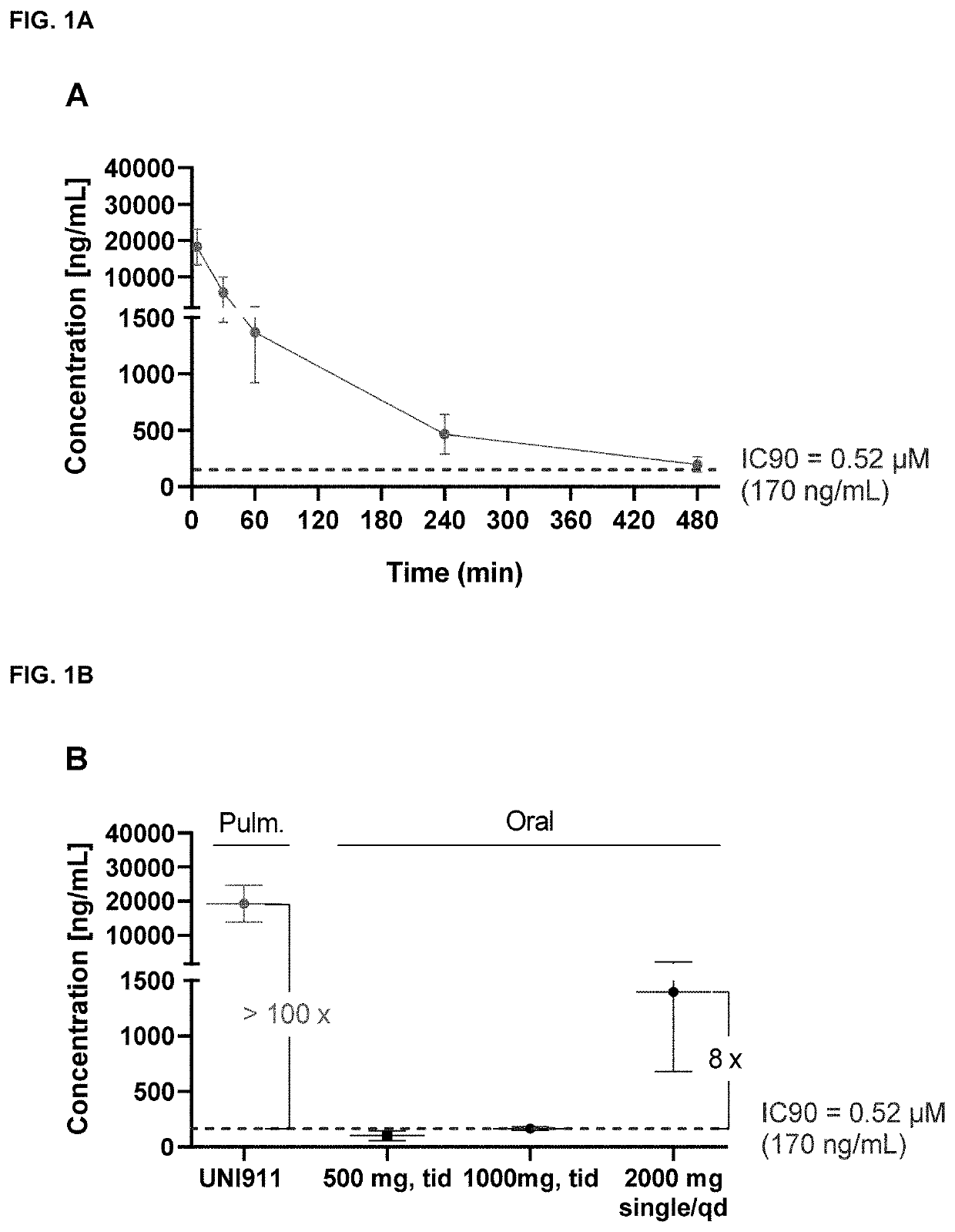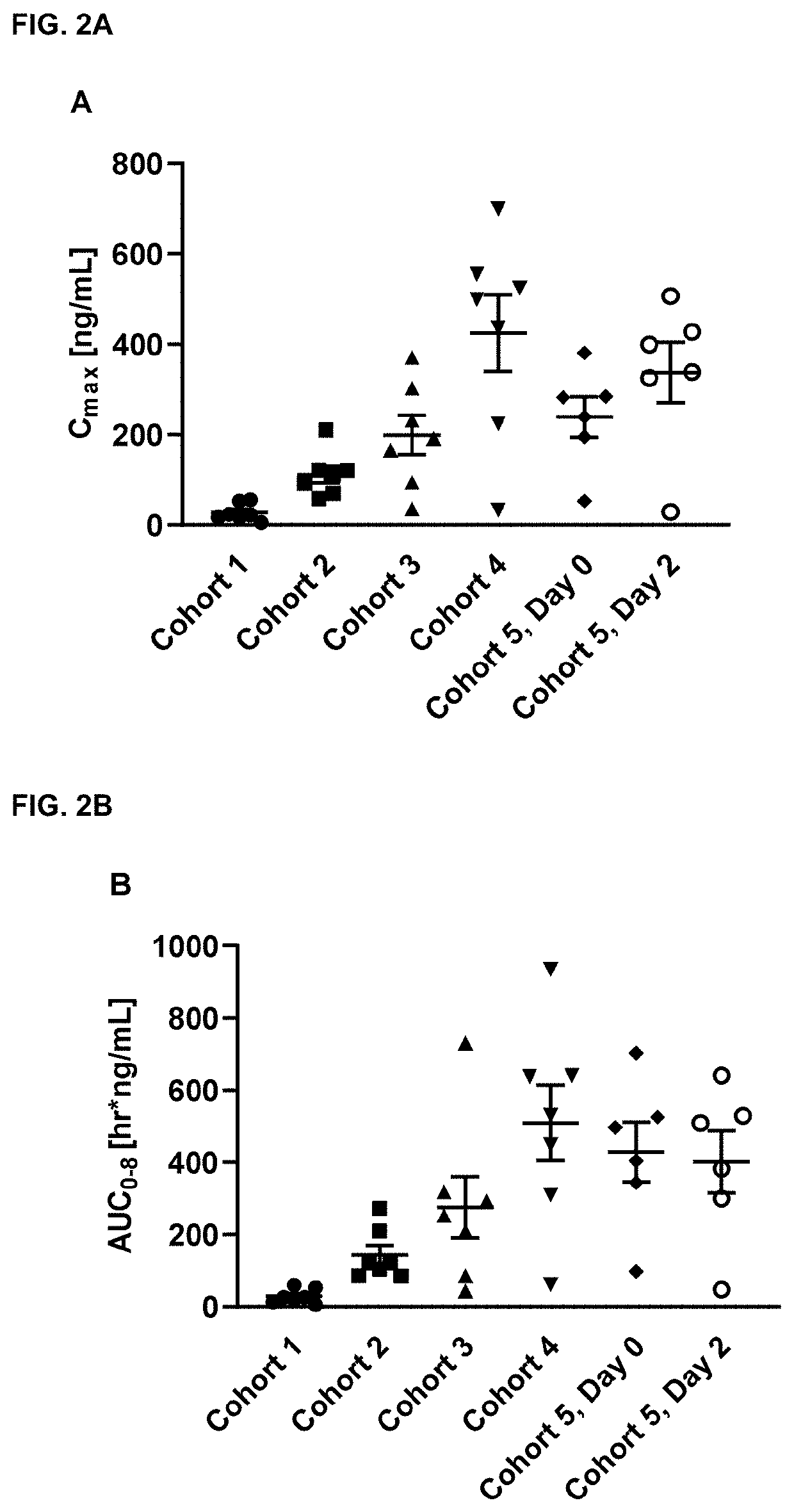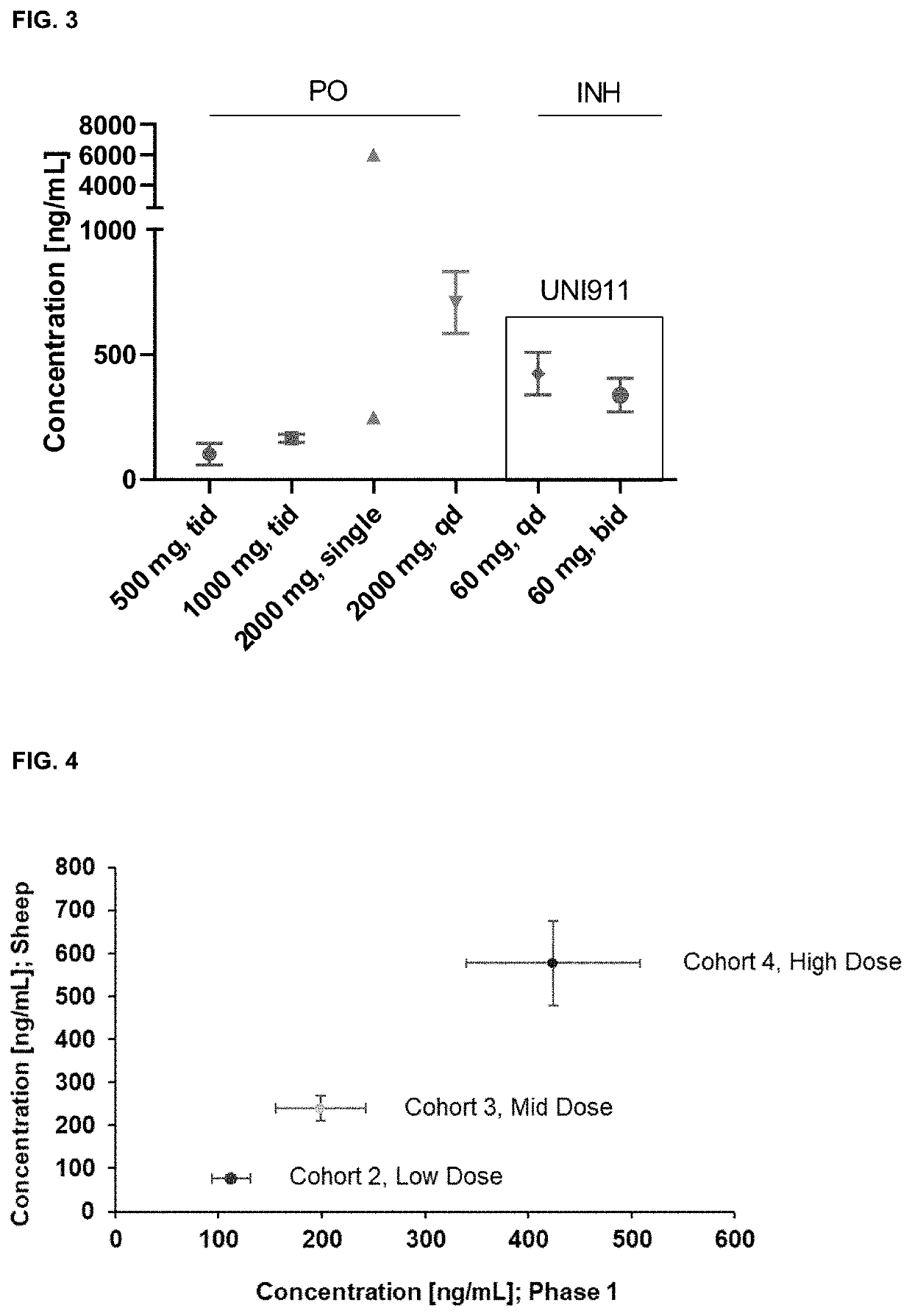Niclosamide formulations for treating disease
a technology of niclosamide and formulation, applied in the field of niclosamide formulations for treating disease, can solve the problems of limiting the clinical development of coronavirus as an antiviral agent, low oral bioavailability, and great challenge of lack of effective treatment of coronavirus infections
- Summary
- Abstract
- Description
- Claims
- Application Information
AI Technical Summary
Benefits of technology
Problems solved by technology
Method used
Image
Examples
example 1
ormulation Comprising Niclosamide Ethanolamine
[0473]The formulation shown in Table 1 was prepared as described below:
[0474]
TABLE 1CompositionFormulation AComponent (trade name)% (w / v)Niclosamide ethanolamine1.0Polyvinylpyrrolidone2.0(PVP K30)Hydroxypropyl Beta-cyclodextrin15.0(Kleptose ® HPB)DMSO1.01M NaOH / HCLAs required to adjust pH to 7.8Water (milliQ)q.s.
[0475]Niclosamide ethanolamine (100 mg), PVP K30 (200 mg) and hydroxypropyl beta-cyclodextrin (1500 mg) were weighed into a 20 mL glass vial.
[0476]To this powder mixture was added milliQ water (8.5 mL), 2 drops 5M NaOH, and 100 μL DMSO. The pH of the mixture was at least 8
[0477]The vial was placed in an ultrasonic bath at 65° C. and mixed according to the following schedule:
vortex for 1 to 10 minutes; ultrasonication at 65° C.; vortex for 1 to 5 minutes; ultrasonication at 65° C.; and vortex 1 min;
to provide a clear red composition without any visible particles.
[0478]2 drops 5M HCl were added to the composition followed by vortex...
example 2
ormulation Comprising Oxyclozanide
[0481]The formulations shown in Table 3 was prepared using an analogous method to that described in Example 1:
[0482]
TABLE 3CompositionFormulation FFormulation GComponent (trade name)% (w / v)% (w / v)Oxyclozanide11Polyvinylpyrrolidone22(PVP K30)Hydroxypropyl Beta-cyclodextrin1550(Kleptose ® HPB)DMSO1—1M NaOH / HCLAs required As required to adjust pH toto adjust pH to7.5-7.87.5-7.8Water (milliQ)q.s.q.s.
example 3
tability of Aqueous Niclosamide Ethanolamine Formulations
[0483]A sample of Formulation A described in Example 1 was stored under refrigerated conditions at 5° C. in darkness. Another sample was stored at room temperature exposed to ambient light. After 74 days storage both samples were analysed for degradation of the niclosamide using the following HPLC-UV method:
Column: Kinetex C18 100 Å LC column (4.6×100 mm, 5 μm) from Phenomenex
Mobile phase A: 0.1 M acetate buffer adjusted to pH 4.0
Mobile phase B: methanol
Injection volume: 5 μL
Flow rate: 1.0 mL / min
Detection wavelength: 310 nm
Measurement time: 10 min
Gradient conditions:
[0484]
Time% A% B0.0070305.0020807.5020807.607030
Results
[0485]The sample stored under refrigerated conditions in darkness showed 0.6% degradation of niclosamide. The sample stored at room temperature showed 0.7% degradation of niclosamide.
PUM
| Property | Measurement | Unit |
|---|---|---|
| concentration | aaaaa | aaaaa |
| concentration | aaaaa | aaaaa |
| concentration | aaaaa | aaaaa |
Abstract
Description
Claims
Application Information
 Login to View More
Login to View More - R&D
- Intellectual Property
- Life Sciences
- Materials
- Tech Scout
- Unparalleled Data Quality
- Higher Quality Content
- 60% Fewer Hallucinations
Browse by: Latest US Patents, China's latest patents, Technical Efficacy Thesaurus, Application Domain, Technology Topic, Popular Technical Reports.
© 2025 PatSnap. All rights reserved.Legal|Privacy policy|Modern Slavery Act Transparency Statement|Sitemap|About US| Contact US: help@patsnap.com



